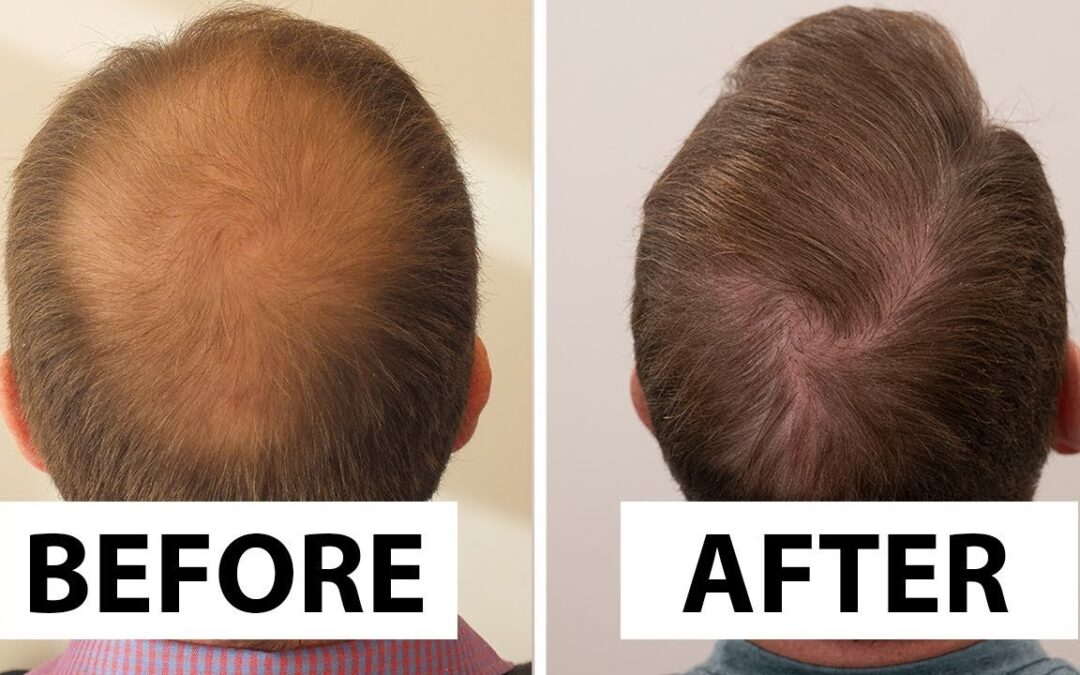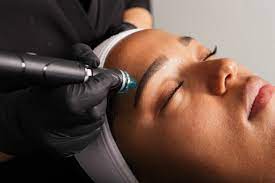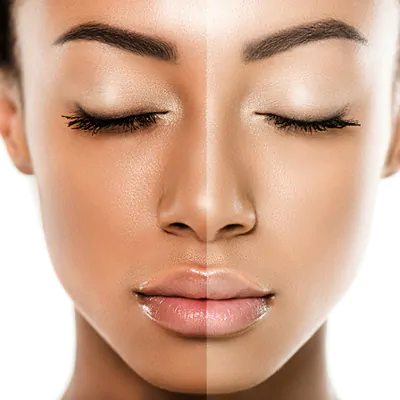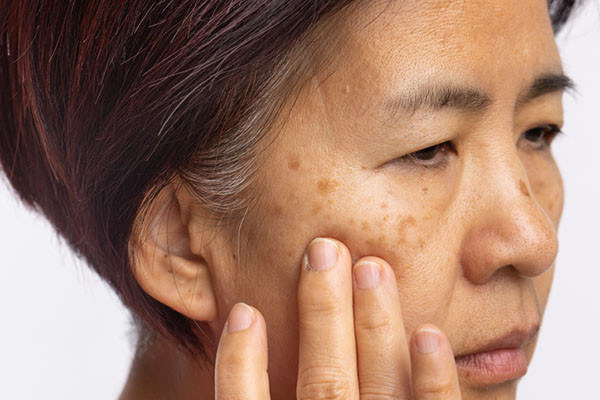
by laraibnaeem2005 | Jul 14, 2025 | Health
When considering a 1 dirham hair transplant, it’s natural to wonder what the actual day of the procedure entails. Knowing what to expect helps ease any anxiety and prepares you mentally and physically for the process. This article offers a detailed overview of what happens on the day of your affordable Hair transplant for 1 dirham in Dubai(زراعة الشعر مقابل 1 درهم في دبي), covering preparation, procedure, risks, benefits, FAQs, and a clear conclusion to guide you through this important step.
Understanding the 1 Dirham Hair Transplant Day
Choosing a 1 dirham hair transplant is a tempting option for those seeking affordable hair restoration. The day of the procedure is a key moment where your expectations meet reality. Being informed about the process—from arrival to post-procedure care—can make the experience smoother and more reassuring.
Importance of Being Prepared on Transplant Day:
Why Preparation Matters
Proper preparation for your 1 dirham hair transplant is essential to ensure the procedure goes well. Clinics usually provide instructions such as avoiding alcohol, caffeine, and certain medications before the day of the transplant. A well-prepared patient can help reduce complications and improve healing.
-
Arriving with a clean scalp, free of styling products
-
Wearing comfortable clothing for easy access to the head and neck
-
Having a healthy, well-rested body to better tolerate the procedure
Preparation not only benefits the technical aspects but also helps you stay calm and confident throughout the day.
What Happens During the 1 Dirham Hair Transplant Procedure?
Step-by-Step Overview
The actual transplant usually follows a clear sequence designed for efficiency and comfort. While the specifics might vary, here’s a general breakdown of the day’s events:
-
Consultation and Assessment: Initial check to confirm hair loss pattern and treatment plan
-
Anesthesia Administration: Local anesthesia applied to numb the scalp and minimize discomfort
-
Hair Follicle Extraction: Using specialized techniques, hair follicles are carefully removed from donor areas
-
Recipient Site Preparation: Tiny incisions are made where the hair follicles will be implanted
-
Implantation: Transplanted follicles are placed with precision to mimic natural hair growth
-
Post-Procedure Instructions: Guidance on care and activities to support recovery
Each stage is crucial to achieving the best results from your 1 dirham hair transplant.
Risks to Be Aware of on Procedure Day:
Potential Challenges
While generally safe, a hair transplant does carry some risks, especially if proper protocols aren’t followed. Be mindful of these possibilities:
-
Minor pain or discomfort despite anesthesia
-
Swelling or redness around treated areas
-
Risk of infection if hygiene is not maintained
-
Temporary numbness or tingling sensations
-
Possible shock loss of some transplanted hairs initially
Understanding these risks helps you stay vigilant and report any concerns promptly.
Benefits of Knowing What to Expect:
Advantages of Being Informed
Being fully prepared for your Hair transplant for 1 dirham treatment(علاج زراعة الشعر مقابل 1 درهم) day offers several benefits that contribute to a positive experience:
-
Reduced anxiety by knowing the procedure steps
-
Better cooperation with clinic staff during the process
-
Improved ability to follow post-procedure care instructions
-
Increased likelihood of successful hair growth and healing
-
Enhanced overall satisfaction with the treatment
Preparation empowers you to take control of your hair restoration journey.
FAQs About the Day of a 1 Dirham Hair Transplant:
What should I wear on the day of the transplant?
Opt for loose, comfortable clothes with a button-up or zip-up front to avoid pulling clothes over your head post-procedure.
How long does the procedure typically take?
Most sessions last between 3 to 6 hours depending on the extent of hair transplantation.
Will I feel pain during the transplant?
Local anesthesia minimizes pain, though some mild discomfort might be experienced.
Can I eat before the procedure?
Yes, it’s usually recommended to eat a light meal to maintain energy during the session.
When can I return to normal activities?
Most patients resume light activities within a day or two, avoiding strenuous exercise for about a week.
Conclusion:
The day of your 1 dirham hair transplant is a significant milestone toward restoring your hair and confidence. By understanding what to expect—from preparation and the procedure itself to risks and benefits—you equip yourself for a smooth, safe, and effective experience. Careful preparation and realistic expectations help ensure that your affordable hair transplant journey is both positive and rewarding. Remember, being informed is the first step to achieving the best possible results and enjoying your new look with pride.

by laraibnaeem2005 | Jul 14, 2025 | Health
As skin matures, it begins to show signs of wear—fine lines, dryness, dullness, and loss of elasticity. That’s when many start exploring advanced skincare solutions and wonder, how does HydraFacial work for aging skin? HydraFacial treatment in Dubai(علاج هيدرا فيشل في دبي) has earned its reputation as a powerhouse treatment that targets multiple aging concerns at once. By combining cleansing, exfoliation, hydration, and serum infusion in one seamless process, it deeply nourishes aging skin while improving tone, texture, and firmness. Unlike invasive treatments, HydraFacial offers gentle rejuvenation that enhances the skin’s natural ability to renew and repair—without irritation or downtime.
Why Aging Skin Needs Specialized Care?
With time, skin becomes thinner, drier, and less elastic due to the natural decline of collagen, elastin, and cell turnover. Environmental exposure, stress, and lifestyle choices further accelerate this process. Mature skin requires more than basic cleansing or moisturizing—it needs treatments that deliver deep hydration, promote renewal, and strengthen the skin barrier. HydraFacial is uniquely designed to meet these needs. It goes beyond surface-level care by delivering potent ingredients like peptides, antioxidants, and hyaluronic acid, directly where they’re most effective. This multi-action approach makes it a go-to option for those aiming to refresh their complexion and fight visible signs of aging.
How HydraFacial Targets Signs of Aging?
Deep Cleansing and Exfoliation
Aging skin often holds onto dead cells that dull its appearance. HydraFacial begins with a gentle exfoliation that removes debris and impurities, allowing healthier skin to emerge. This prepares the skin for better absorption of anti-aging ingredients.
Hydration Infusion
One of the main causes of aged, tired-looking skin is dehydration. HydraFacial restores moisture with hyaluronic acid and other hydrating agents, instantly plumping fine lines and enhancing suppleness.
Antioxidants and Peptides
Powerful serums used during the treatment contain antioxidants to protect the skin from free radical damage and peptides to stimulate collagen production. These components are essential for firming the skin and reducing the appearance of wrinkles.
Improved Circulation
The suction technology boosts blood flow, delivering oxygen and nutrients that promote skin regeneration. Over time, this can enhance skin tone and texture, offering a more youthful and luminous look.
Are There Any Risks for Aging Skin?
HydraFacial treatment(علاج هيدرا فيشل) is considered very safe, even for delicate mature skin. However, there are a few points to be mindful of:
-
Temporary Redness: Aging skin may be more prone to slight redness post-treatment, though this typically fades within hours.
-
Sensitivity to Actives: Post-facial, skin may be more reactive to strong actives like retinol. Stick to soothing, hydrating products for at least 48 hours.
-
UV Vulnerability: Since exfoliation reveals fresher layers, mature skin becomes more sensitive to sun exposure. Sunscreen is essential to prevent further aging and pigmentation.
The key to minimizing risks is proper post-care and choosing serums that align with your skin’s condition and age-related concerns.
Frequently Asked Questions:
How Soon Can I See Results for Aging Skin?
Immediate improvements in hydration and glow are noticeable after the first session. However, long-term effects like firmer skin and softened lines usually become more evident after a series of treatments.
Is HydraFacial Better Than Traditional Facials for Aging Skin?
Yes, for many people. HydraFacial offers more than surface-level pampering—it actively targets aging signs with clinical-grade serums and advanced technology, making it more effective than standard facials.
How Often Should I Get HydraFacial for Anti-Aging Benefits?
Once a month is ideal for maintaining healthy, youthful-looking skin. Regular sessions provide cumulative benefits that support elasticity, hydration, and brightness.
Can It Be Combined With Other Anti-Aging Treatments?
Absolutely. HydraFacial works well alongside other non-invasive treatments and skincare routines. It enhances results by improving skin health and preparing it for further care.
Conclusion: How Does HydraFacial Work for Aging Skin?
To answer the question, how does HydraFacial work for aging skin?—it revitalizes from the inside out. By combining exfoliation, hydration, antioxidant protection, and collagen stimulation, HydraFacial directly addresses the core causes of aging skin. It delivers both immediate radiance and long-term improvements in tone, texture, and firmness. For anyone looking to refresh their appearance without invasive procedures, HydraFacial offers an elegant and effective path to glowing, younger-looking skin. With consistent care and the right approach, aging skin can thrive—hydrated, strong, and beautifully renewed.

by laraibnaeem2005 | Jul 11, 2025 | Health
In recent years, the field of slimming surgery has witnessed remarkable innovations that are transforming how patients achieve body contouring goals. The latest advances in slimming surgery techniques focus on improving safety, precision, and recovery time while delivering more natural and long-lasting results. As more people seek effective methods to reduce stubborn fat and tighten skin, staying informed about cutting-edge surgical options is essential. This article delves into these new techniques, explaining their importance, risks, benefits, frequently asked questions, and concluding with key takeaways for anyone considering Slimming surgeries in Dubai(جراحات التخسيس في دبي).
Introduction: Embracing Innovation in Slimming Surgery
The latest advances in slimming surgery techniques offer patients a wider range of choices that are less invasive and more efficient than traditional methods. These breakthroughs often combine technology with refined surgical skills to enhance outcomes and patient comfort. Whether targeting localized fat deposits or reshaping entire body areas, modern slimming surgery is evolving to meet diverse needs while reducing downtime.
Importance of Advanced Techniques in Slimming Surgery:
-
Improved Precision: New technologies allow surgeons to sculpt the body more accurately, minimizing damage to surrounding tissues.
-
Minimized Invasiveness: Many procedures now use smaller incisions or non-surgical methods to reduce trauma.
-
Faster Recovery: Patients experience shorter downtime due to less invasive approaches and enhanced healing protocols.
-
Customized Solutions: Advanced techniques cater to individual body types and goals with greater flexibility.
-
Better Safety Profiles: Innovations help lower complication risks by improving control during surgery.
These factors highlight why keeping abreast of new slimming surgery techniques is crucial for those seeking optimal results.
Risks Associated with New Slimming Surgery Techniques:
While advanced techniques offer benefits, potential risks remain:
-
Unfamiliarity: New procedures might have limited long-term data, so outcomes can vary.
-
Technique Sensitivity: Precision tools require highly skilled surgeons to avoid complications.
-
Cost Implications: Cutting-edge methods may be more expensive or less accessible initially.
-
Possible Side Effects: Swelling, bruising, or numbness can occur depending on the procedure type.
-
Inadequate Expectations: Not all patients may be suitable candidates, risking dissatisfaction if expectations are unrealistic.
Understanding these risks helps patients weigh the pros and cons before proceeding.
Benefits of the Latest Slimming Surgery Innovations:
-
Laser-Assisted Liposuction: Uses laser energy to liquefy fat, facilitating easier removal and skin tightening.
-
Ultrasound Cavitation: Employs ultrasonic waves to break down fat cells non-invasively, ideal for mild contouring.
-
Radiofrequency-Assisted Devices: Stimulate collagen production while melting fat, improving skin texture post-surgery.
-
Tumescent Liposuction: Enhanced fluid injection techniques reduce bleeding and pain.
-
3D Imaging and Planning: Allows surgeons to visualize results beforehand for precise treatment design.
Together, these innovations contribute to more comfortable procedures with aesthetically pleasing results.
Frequently Asked Questions (FAQs):
Are new slimming surgery techniques safe?
When performed by experienced professionals, these advanced methods are generally safe, though patient selection is key.
How long is the recovery compared to traditional methods?
Recovery time is often shorter with less invasive techniques, but it varies depending on the procedure and individual healing.
Can these methods address loose skin as well as fat?
Some technologies, like radiofrequency-assisted devices, can tighten skin, but severe laxity might still require additional procedures.
Are results permanent?
Results can be long-lasting if a healthy lifestyle is maintained post-surgery.
How do I know which technique is right for me?
A detailed consultation to assess your body, goals, and medical history is necessary to determine the best option.
Conclusion: The Future of Slimming Surgery is Here
The latest advances in Slimming surgeries(جراحات التخسيس) techniques represent a promising future for body contouring. By combining innovative technology with refined surgical expertise, these methods provide safer, more effective, and customized solutions. Although risks exist, proper patient evaluation and skilled execution greatly reduce complications. Patients benefit from quicker recoveries, improved aesthetics, and the potential for enhanced confidence. Staying informed and consulting with qualified professionals can help you select the ideal slimming surgery technique tailored to your needs, ensuring a satisfying journey toward a sculpted physique.

by laraibnaeem2005 | Jul 11, 2025 | Health
A frequently asked question in the realm of skincare is, is it possible to lighten skin permanently? Many people aspire to achieve a lighter complexion for aesthetic or personal reasons, but the permanence of Skin Whitening in Dubai(تبييض البشرة في دبي) remains a topic of debate. Understanding how skin pigmentation works, what treatments are available, and their long-term effects can help clarify whether permanent skin lightening is attainable or if results require ongoing maintenance.
The Importance of Understanding Skin Lightening Permanence:
Knowing whether skin lightening can be permanent is crucial for setting realistic expectations before beginning any treatment. Skin color is primarily determined by melanin, the pigment produced by melanocytes in the skin. While certain treatments reduce melanin production or break down existing pigment, the body continuously produces melanin to protect the skin from environmental stressors, especially UV radiation.
This natural cycle means that many skin lightening methods provide temporary or gradual results rather than permanent changes. Appreciating this helps users avoid frustration and guides them toward safe and sustainable skincare routines that enhance skin tone without risking damage.
How Skin Lightening Treatments Work and Their Limitations?
Most skin lightening treatments target melanin synthesis through ingredients like hydroquinone, kojic acid, vitamin C, niacinamide, or chemical exfoliants. These substances work by either inhibiting tyrosinase (an enzyme critical to melanin production) or promoting the shedding of pigmented skin cells.
While these methods can significantly lighten the skin, the effects usually depend on continuous use. Once treatments stop, melanin production may resume, especially with sun exposure or hormonal changes. There is no widely available treatment that alters melanocyte function permanently without potential side effects or damage to the skin.
Risks of Attempting Permanent Skin Lightening:
Trying to achieve permanent skin lightening involves risks, particularly when using harsh chemicals or unregulated products:
-
Skin irritation and sensitivity: Overuse can lead to redness, peeling, and inflammation.
-
Uneven pigmentation: Excessive treatment may cause patchiness or hyperpigmentation.
-
Skin thinning: Prolonged use of strong agents can weaken the skin barrier.
-
Increased sun sensitivity: Lightened skin may become more vulnerable to UV damage.
-
Toxicity: Some products contain harmful substances like mercury, which pose serious health risks.
Balancing the desire for lasting results with skin safety is critical to avoid long-term harm.
Benefits of Controlled and Safe Skin Lightening Practices:
When approached thoughtfully, Skin Whitening(تبييض البشرة) treatments offer several advantages:
-
Improved skin clarity: Reduces dark spots and evens skin tone.
-
Boosted confidence: A brighter complexion can enhance self-esteem.
-
Gradual results: Safer, gentle methods provide natural-looking improvement.
-
Supportive skincare: Many lightening products also contain antioxidants and moisturizers.
-
Customizable approach: Treatments can be tailored to individual skin types and goals.
Prioritizing safety and consistency promotes healthier skin while achieving desired aesthetic benefits.
Frequently Asked Questions (FAQs):
Can skin be lightened permanently with current treatments?
Most treatments offer temporary or semi-permanent results; permanent lightening is rare and often unsafe.
Does sun exposure affect the permanence of skin lightening?
Yes, UV rays stimulate melanin production, which can reverse lightening effects if protection is neglected.
Are natural remedies effective for permanent skin lightening?
Natural ingredients may help brighten skin but do not provide permanent changes to pigmentation.
Is it safe to use skin lightening products long-term?
Using gentle, regulated products with proper breaks and sun protection is generally safer than continuous heavy use.
What steps can I take to maintain lighter skin after treatment?
Consistent sun protection, moisturizing, and gentle skincare support lasting results.
Conclusion:
To answer the question, is it possible to lighten skin permanently? the reality is that while many treatments can significantly lighten and improve skin tone, permanent skin lightening remains elusive with current safe and ethical options. Skin’s natural melanin production tends to resume, especially without proper maintenance and sun protection. Therefore, most skin lightening results require ongoing care to preserve. Embracing a balanced skincare routine that respects your skin’s health and natural defenses ensures the best outcomes while minimizing risks. With realistic expectations and consistent effort, you can enjoy brighter, more radiant skin safely and sustainably.

by laraibnaeem2005 | Jul 10, 2025 | Health
If you’re dealing with melasma, you might be asking, “What daily skincare routine helps with melasma?” Melasma Treatment in Dubai(علاج الكلف في دبي) is a skin condition characterized by dark, irregular patches caused by excess melanin production. Establishing a consistent and gentle daily skincare routine is crucial for managing melasma effectively. The right routine can help reduce pigmentation, protect skin from triggers, and improve overall skin health, leading to a more even complexion.
Importance of a Consistent Skincare Routine for Melasma:
A daily skincare routine tailored to melasma plays a key role in controlling its appearance. Since melasma often worsens with sun exposure and skin irritation, a routine focused on protection and gentle treatment can prevent flare-ups and lighten dark patches over time. Consistency is vital because irregular care allows pigmentation to persist or worsen, undermining any progress made through treatments or natural healing.
Essential Steps in a Daily Skincare Routine for Melasma:
-
Cleansing: Use a gentle, sulfate-free cleanser that removes impurities without stripping natural oils or irritating the skin.
-
Sun Protection: Apply broad-spectrum sunscreen with SPF 30 or higher every morning, even on cloudy days. Reapply every two hours if outdoors.
-
Targeted Treatment: Incorporate serums or creams with ingredients like niacinamide, vitamin C, or azelaic acid to reduce pigmentation.
-
Moisturizing: Use a hydrating, non-comedogenic moisturizer to maintain the skin barrier and soothe irritation.
-
Evening Care: At night, consider gentle exfoliation with mild AHAs or BHAs a few times a week to promote cell turnover.
-
Avoid Irritants: Steer clear of harsh scrubs, strong acids, and products with alcohol or fragrance that can aggravate melasma.
Risks of Neglecting a Proper Skincare Routine:
-
Worsening Pigmentation: Without proper care, melasma patches can become darker and more widespread.
-
Increased Sensitivity: Skipping moisturizer or using harsh products can damage the skin barrier, leading to redness and irritation.
-
Reduced Treatment Effectiveness: Sun exposure without sunscreen and inconsistent product use can make treatments less effective.
-
Emotional Impact: Persistent, untreated melasma may lower confidence and affect self-esteem.
Recognizing these risks underscores why a dedicated routine is necessary.
Benefits of Following a Melasma-Friendly Skincare Routine:
-
Improved Skin Tone: Regular use of brightening ingredients helps fade dark patches.
-
Enhanced Skin Protection: Consistent sunscreen use prevents new pigmentation.
-
Healthier Skin Barrier: Proper cleansing and moisturizing reduce irritation and sensitivity.
-
Better Treatment Results: Complementing treatments with a solid routine speeds up progress.
-
Boosted Confidence: Clearer, more even skin supports emotional well-being.
Frequently Asked Questions About Skincare for Melasma:
How soon will I see results from a skincare routine?
Visible improvements can take several weeks to months depending on the severity of melasma and product effectiveness.
Can I use makeup with melasma?
Yes, non-comedogenic and mineral-based makeup options can help cover patches without irritating skin.
Are natural remedies effective in a daily routine?
Some natural ingredients like aloe vera or licorice extract may help, but they should be used alongside proven treatments.
Is it necessary to avoid all sun exposure?
Complete avoidance is difficult, but minimizing exposure and using sun protection are key steps.
Can I exfoliate daily with melasma?
Daily exfoliation is not recommended as it can irritate skin; gentle exfoliation 1-3 times per week is better.
Conclusion:
Answering the question, “What daily skincare routine helps with melasma?” involves a blend of gentle cleansing, diligent sun protection, targeted Melasma Treatment(علاج الكلف), and skin barrier support. A consistent routine focused on reducing pigmentation and protecting the skin from triggers not only manages melasma more effectively but also promotes healthier skin overall. Avoiding irritants and embracing a patient, mindful approach to skincare leads to gradual improvements in skin tone and texture. Ultimately, a well-planned daily routine is a powerful foundation in the journey toward clearer, more radiant skin despite melasma’s challenges.





